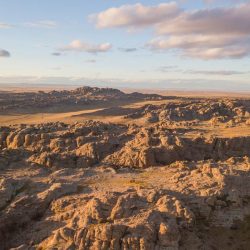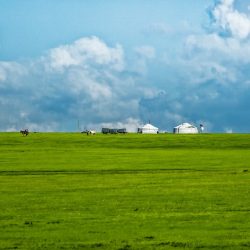Every morning, wake up at a different point in the vast desert (...) relax your arms, stretch out half-naked in the cold, pure air; become intoxicated with light and space; experience, on waking, the carefree exhilaration of just breathing, just living" This quote from Pierre Loti could sum up your encounter with the Gobi Desert, a jewel of a thousand colours. Discovering the immensity of the Khongoriin Els sand dunes on a camel, admiring an oasis, then plunging into the Orkhon valley, within the natural parks, waterfalls and steppes, nature offers you a unique spectacle every day...
Arrival in Ulaanbaatar
Welcome at the airport by our team. Transfer to the hotel. Rest time at the hotel.
Lunch in a traditional restaurant to sample the famous Mongolian barbecue. Then
we set off to discover Ulaanbaatar, a city of astonishing contrasts. This
Soviet-style capital, still marked by its history, is now well on the map.
alive. At the crossroads of Eastern and Western influences, it seems to be in full
transition, torn between communist and capitalist economies, nomadic lifestyles and
sedentary.
Visits to the National History Museum and the Gandan Monastery, the world's largest religious centre.
of Mongolia, will give you a good historical and cultural basis for your trip.
discovering the country.
An evening of traditional song and dance by the Mongolian National Academic Ensemble,
an unforgettable show.
Night at hotel L/D


























